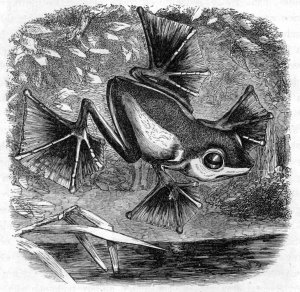
 | |
The CleaveSpec class provides a model for specifying aqueous cleavage specifications (patterns) of Polymer Sequences. More...
| Header: | #include <CleaveSpec.hpp> |
| Inherits: | MsXpS::libXpertMass::PolChemDefEntity |
| CleaveSpec(PolChemDefCstSPtr pol_chem_def_csp, QString name, QString pattern = QString()) | |
| CleaveSpec(const CleaveSpec &other) | |
| virtual | ~CleaveSpec() |
| QString * | formatXmlClsElement(int offset, const QString &indent = QString(" ")) |
| QList<CleaveMotif *> * | motifList() |
| bool | parse() |
| const QString & | pattern() |
| bool | renderXmlClsElement(const QDomElement &element, int version) |
| QList<CleaveRule *> * | ruleList() |
| void | setPattern(const QString &pattern) |
| bool | validate() |
| CleaveSpec & | operator=(const CleaveSpec &other) |
| int | isNameInList(const QString &name, const QList<CleaveSpec *> &cleave_spec_list, CleaveSpec *other = nullptr) |
| QList<CleaveMotif *> | m_motifList |
| QString | m_pattern |
| QList<CleaveRule *> | m_ruleList |
Cleavage specifications determine the specificity of cleavage in a polymer sequence using a simple syntax. For example, Trypsin is able to cleave after lysyl and arginyl residues. Its cleavage pattern is thus "Lys/;Arg/". However, it is known that Trypsin fails to cleave after Lys if that monomer is followed by a Prolyl residue, thus the complete cleavage specification for Trypsin comprises three cleavage motifs: "Lys/;Arg/;-Lys/Pro".
A cleavage specification might not be enough information to determine the manner in which a polymer is cleaved. Cleavage rules might be required to refine the specification. A cleavage specification might hold as many cleavage rules as required.
See also CleaveMotif and CleaveRule.
Constructs a CleaveSpec instance.
Constructs a CleaveSpec instance as a copy of other.
[virtual noexcept] CleaveSpec::~CleaveSpec()Destructs this CleaveSpec instance.
Formats a string describing this CleaveSpec instance suitable to be used as an XML element.
The XML element is typically used in a polymer chemistry defintion and looks like this:
<cls> <name>CyanogenBromide</name> <pattern>M/</pattern> <clr> <re-mnm-code>M</re-mnm-code> <re-formula>-CH2S+O</re-formula> </clr> </cls>
The formatting of the XML element takes into account offset and indent by prepending the string with offset * indent character substring.
indent defaults to two spaces.
Returns a dynamically allocated string that needs to be freed after use.
[static] int CleaveSpec::isNameInList(const QString &name, const QList<CleaveSpec *> &cleave_spec_list, CleaveSpec *other = nullptr)Searches for a CleaveSpec instance by name in cleave_spec_list.
If the CleaveSpec instance is found, it is copied into other.
Returns the index of the found cleavage specification or -1 if none is found or if other is empty.
Returns the list of CleaveMotif instances.
Parses this CleaveSpec instance.
The parsing involves separating the components found in the m_pattern string and making CleaveMotif instances out of them.
Starting from a pattern "Lys/;Arg/;-Lys/Pro", the parsing would first split it into three site strings:
Each of these site strings will be deconstructed into motifs, stored in CleaveMotif objects:
Returns true if parsing is successful, false otherwise.
Returns the pattern.
See also setPattern().
Parses a cleavage specification XML element using a versioned function.
The data in the element are validated and if successful they are set to this instance, thus initializing it.
Returns true upon success, false otherwise.
Returns the list of CleaveRule instances.
Sets the pattern.
See also pattern().
Validates this CleaveSpec instance.
The validation involves checking that:
Returns true if the validation is successful, false otherwise.
Assigns other to this CleaveSpec instance.
Returns a reference to this CleaveSpec instance.
This variable holds the list of CleaveMotifs that together make the CleaveSpec.
See also CleaveMotif.
This variable holds the cleavage pattern, that might comprise more than one CleaveMotif.
See also CleaveMotif and CleaveRule.
This variable holds the list of CleaveRules that might be requied to refine the CleaveSpec.
See also CleaveRule.